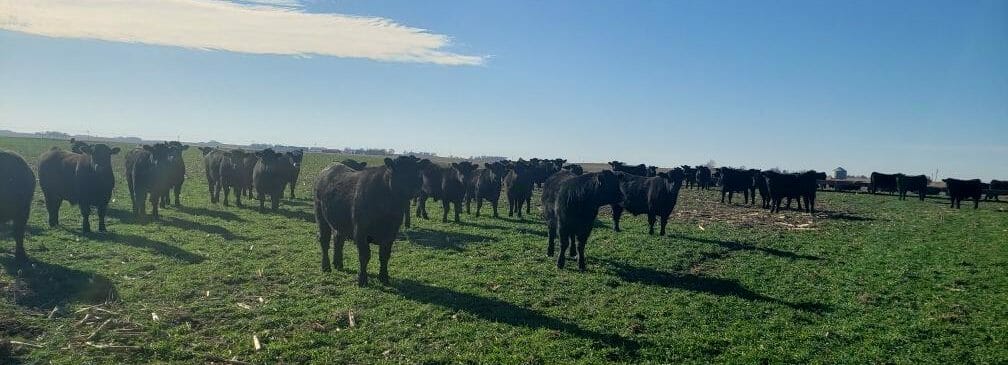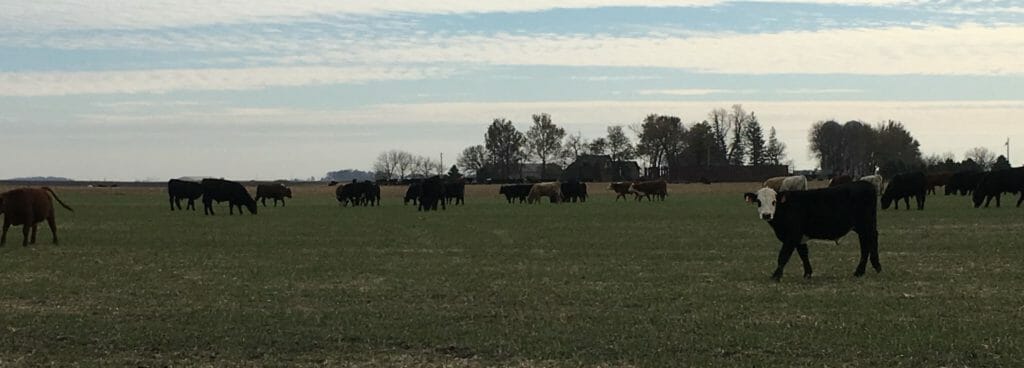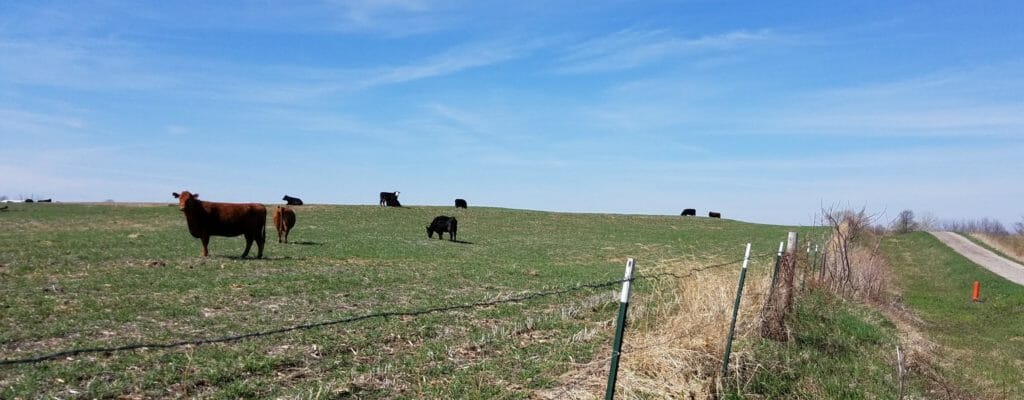Research Highlights the Economic Advantage of Grazing Cover Crops
Crops planted between growing seasons, known as cover crops, prevent erosion in fields that would normally be fallow. Cover crops bolster organic matter thereby providing and capturing valuable nutrients, improve water infiltration, and control weeds. All of these elements can help increase profitability per acre – especially when paired with cattle.
Grazing cattle on cover cropped fields can extend the grazing season and provide additional economic benefits. Three recently published PFI research reports explore this topic focusing on the profitability of feedlot, cow-calf operations and different cover crop mixes.
In the Feedlot
Grazing cover crops may not be a standard practice for feedlot producers, but it can provide additional forage while imparting nutrients to the land. Ben Albright, who operates a diversified crop and feedlot operation with his family, tested this strategy with the cover crop field adjacent to his feedlot.
Profits were achieved over the three years averaging $45.56/acre or $16.08/head (factoring in cost-share and crop insurance discounts). Cover crops can increase the feedlot profit margin as a supplement feedstuff thereby reducing the required amount of TMR (Total Mixed Ration). In this study, Albright saved an average of $3,851 in TMR/year. Allowing feedlot cattle to graze cover crops also decreased winter feed costs which is often the most expensive part of the feed bill.
“Grazing cover crops is a no-brainer for cattle producers, as the numbers show,” says Albright. Cover crops prove to be a cost-effective feedstuff in all segments of beef production – feedlot included.
Cows and Calves on Covers
Economic returns from grazing cover crops can be realized within a year’s time in a cow-calf operation. Four PFI cooperators, all having integrated crop and cattle farms, grazed cover crops in the fall, winter and/or spring to test the economic profitability of this practice. All of these farms integrated a cereal rye cover crop into a traditional corn-soybean rotation.

Four farmers profited an average of $73.52/acre when grazing cereal rye cover crops between their corn and soybean crops.
While cereal rye establishment cost $27.97/acre, grazing of the cover crops at the four sites yielded an average profit of $73.32/acre (factoring in cost-share and crop insurance discounts). Grazing the cover crops had the additional benefit of allowing farmers to spend less on hay, significantly reducing their winter feed bill.
“If a farmer can incorporate livestock into cover crops, it’s hard to deny it works,” said Kennedy, one of the participants of the study.
Finding the Right Mix
Mark Glawe has been using cover crops in his integrated crop and livestock system for 15 years. He farms in Iowa’s Driftless Area and originally turned to cover crops as a way to prevent erosion on steep slopes, but found that they also serve as a valuable feedstuff.
Glawe set out to study different cover crop mixes when paired with grazing. His cover crop mixes included:
- Mung beans, crimson clover, winter peas, pearl millet, cereal rye, sorghum-sudan grass, turnip, rapeseed and sunflowers
- Cereal rye and oats
- Cereal rye, radish and rapeseed
- Cereal rye
The ISU Ag Decision Maker Economics of Cover Crops tool was used to determine the forage value of the different cover crops. The net profits from grazing cover crops averaged $62.07/acre in year 1 and $302.01/acre in year 2. This increase in net profits is attributed to reduced seed costs and more grazing days. Grazing cover crops can continuously provide short-term economic benefits within a one-year timeframe.
“I’m pretty conservative. If I wouldn’t be profiting I wouldn’t be doing it,” said Glawe.
If you’d like to begin planting cover crops please consider enrolling in one of our cover crop cost share programs then visit our Find Cover Crops webpage to locate service providers, map fields and receive expert recommendations.


